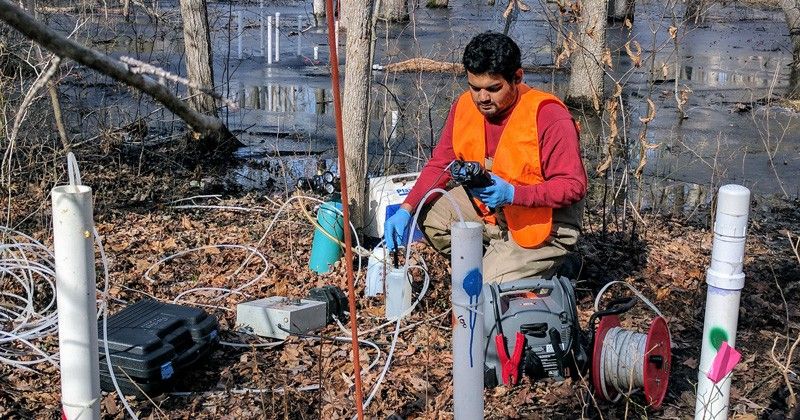Tacking Carbon Chemistry in Wetlands Soils
Published on by Water Network Research, Official research team of The Water Network in Academic
Delaware Environmental Institute Fellow tracks carbon chemistry in wetlands soils: Knowing how soil and water mix is part of how humans survive on Earth.
By Joy Drohan for the University of Delaware

Mohammad Afsar samples and analyzes groundwater at a research site in Blackbird State Forest, Delaware. (Image by Mohammad Afsar, originally published on UD Daily)
Mohammad Afsar , a Delaware Environmental Institute (DENIN) Fellow, is working with Prof. Yan Jin in the University of Delaware’s Department of Plant and Soil Sciences, within the College of Agriculture and Natural Resources, to understand the interactions between colloids and soil organic matter under seasonal wet and dry conditions. The research is a part of a seven-state Mid-Atlantic/Northeast project. Afsar’s research site is a Delmarva Bay freshwater wetland in Blackbird State Forest, Delaware. He collects soil pore water samples along a transect from upland to wetlands and at different soil depths to study the molecular composition of both the soil colloids and organic matter.
The research will improve our understanding of how organic matter is released and transported in these environments. Wetlands cover only 8–10 percent of the world’s land surface, but they store 20–30 percent of global soil carbon.
“If we know more about the interactions between soil minerals and organic matter, we can begin to answer so many other questions, like how are essential nutrients such as dissolved organic carbon, phosphorus, and nitrogen transported and cycled into the deeper soil profile, and from wetlands to downstream water bodies,” said Afsar.
Read the full article on UD Daily
Media
Taxonomy
- Soil
- Wetlands
- Soil & Water Assessment Tools
- Soil Management
- Soil Conservation
- Soil Carbon